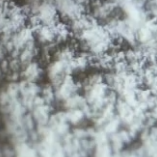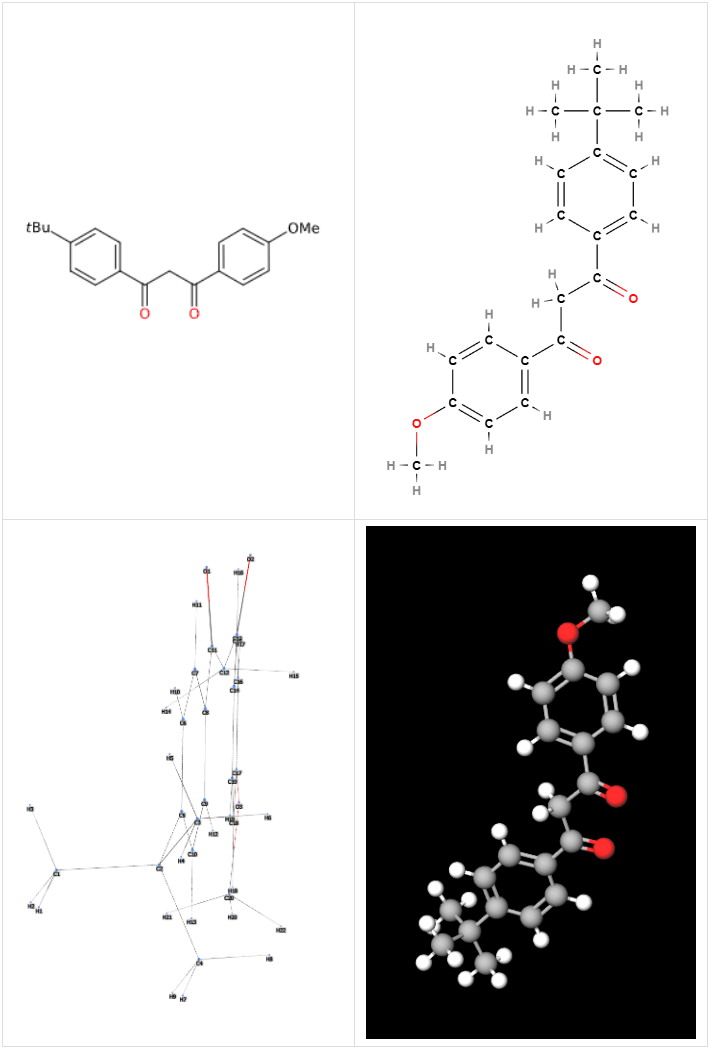Butyl Methoxydibenzoylmethane or Avobenzone is an organic compound produced by the esterification of salicylic acid with butyl alcohol in the presence of an acid catalyst to produce butyl salicylate which, in a Claisen condensation reaction with benzoyl chloride or its derivatives, forms butyl methoxydibenzoylmethane. Subsequently, this product is purified using various techniques such as recrystallisation, solvent extraction and filtration to obtain the purest possible form of butyl methoxydibenzoylmethane.
The name describes the structure of the molecule
- Butyl - Indicates a side chain with four carbon atoms.
- Methoxy - Denotes the presence of a methoxy group (–OCH3).
- Dibenzoylmethane - Indicates the central structure of the compound encompassing two benzene rings and a keto group.
Description of raw materials used in production
- Phthalic anhydride - Used as a starting reactant in the synthesis of avobenzone.
- P-methoxyaniline - Another key reactant.
Synthesis process
- Reaction - A reaction between phthalic anhydride and p-methoxyaniline can lead to the formation of avobenzone. This reaction involves forming an amide bond and subsequent reduction to form the desired product.
- Purification - After the reaction, the product is purified through various processes such as filtration and distillation.
Butyl Methoxydibenzoylmethane and Avobenzone are the same chemical compound.
It appears as a white powder that is not very soluble in water, but soluble in organic solvents such as isopropyl alcohol, ethanol and oils.

What it is used for and where
Cosmetics
It is a restricted ingredient VI/8 as a Relevant Item in the Annexes of the European Cosmetics Regulation 1223/2009.
Butyl Methoxydibenzoylmethane is generally used in cosmetics as a UV filter, maximum absorption length of 360nm (1) and as an INCI ingredient has the following functions:
UV filter. It is the defining ingredient in sun creams that can mitigate the sun's ultraviolet (UV) radiation, which is a high risk factor for the development of skin cancer, erythema and photo-ageing.
UV absorber. It acts by intercepting ultraviolet light before it can cause damage by reducing its energy through dissipation and returning it to a lower energy state.
Light stabilizer. It prevents light from degrading light-sensitive components and slows down degradation reactions that have already begun. The mechanism is, in a way, similar to antioxidants and the effectiveness depends on the.complexity of the formulation and the density of the product.
The most relevant studies on this chemical compound have been selected with a summary of their contents:
Butyl Methoxydibenzoylmethane studies

- Molecular Formula: C20H22O3
- Molecular Weight: 310.393 g/mol
- UNII: G63QQF2NOX
- CAS: 70356-09-1 87075-14-7 185160-18-3 112725-59-4
- EC Number: 274-581-6
- PubChem Substance ID 329751311
- MDL number MFCD00210252
Synonyms:
- Avobenzone
- Parsol 1789
- Butyl methoxydibenzoylmethane
- 1-(4-tert-butylphenyl)-3-(4-methoxyphenyl)propane-1,3-dione
- 4-tert-Butyl-4'-methoxy-dibenzoylmethane
- Escalol 517
- Eusolex 9020
- 1-(4-(tert-Butyl)phenyl)-3-(4-methoxyphenyl)propane-1,3-dione
- 1-(p-tert-Butylphenyl)-3-(p-methoxyphenyl)-1,3-propanedione
- 1-(4-tert-Butylphenyl)-3-(4-methoxyphenyl)-1,3-propanedione
- HSDB 7423
- 1,3-Propanedione, 1-[4-(1,1-dimethylethyl)phenyl]-3-(4-methoxyphenyl)-
- 1-(4-(1,1-Dimethylethyl)phenyl)-3-(4-methoxyphenyl)-1,3-propanedione
- 1-(4-Methoxyphenyl)-3-(4-tert-butylphenyl)-1,3-propanedione
- 1,3-Propanedione, 1-(4-(1,1-dimethylethyl)phenyl)-3-(4-methoxyphenyl)-
- 1-(4-(1,1-Dimethylethyl)phenyl)-3-(4-methoxyphenyl)-1,3-propanedi- one
- 1-(4-(1,1-Dimethylethyl)phenyl)-3-(4-methoxyphenyl)propane-1,3-dione
- 1-[4-(1,1-dimethylethyl)phenyl]-3-(4-methoxyphenyl)-1,3-propanedione
- 4-t-butyl-4'-methoxy-dibenzoylmethane
References____________________________________________
(1) The adsorption behaviour and photoprotection effect of UV filter absorbed on the surface of human hair.
Li X, Hu J, Chen L, Zhang W.
Int J Cosmet Sci. 2016 Feb;38(1):52-9. doi: 10.1111/ics.12247.
![]() Butyl Methoxydibenzoylmethane
Butyl Methoxydibenzoylmethane 


